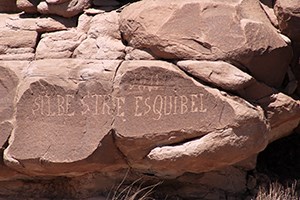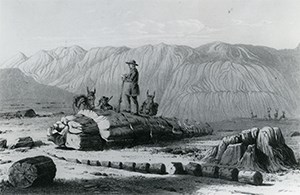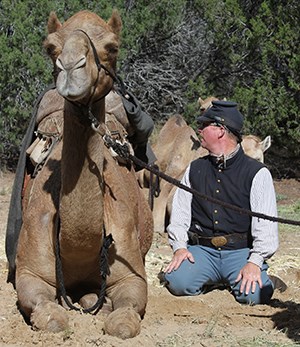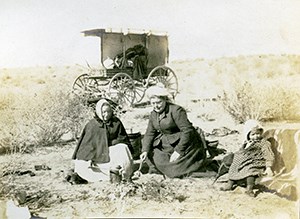
NPS Spanish Exploration Standing at the edge of a colorful sea of badlands and mesas, a Spanish explorer named the region El Desierto Pintado--the Painted Desert--or so the story goes. No mention was made of petrified wood, but the Spanish of the 1500-1700s were focused on finding routes between their colonies along the Rio Grande and the Pacific Coast. Within Petrified Forest National Park, Spanish inscriptions have been discovered from the late 1800s, descendents of some of the earliest non-American Indian settlers in the region. 
NPS Whipple Expedition of 1853 
NPS/Wendy Parrish E. F. Beale and the U.S. Camel Corps 
NPS Museum Collection Homesteading |
Last updated: February 24, 2015
